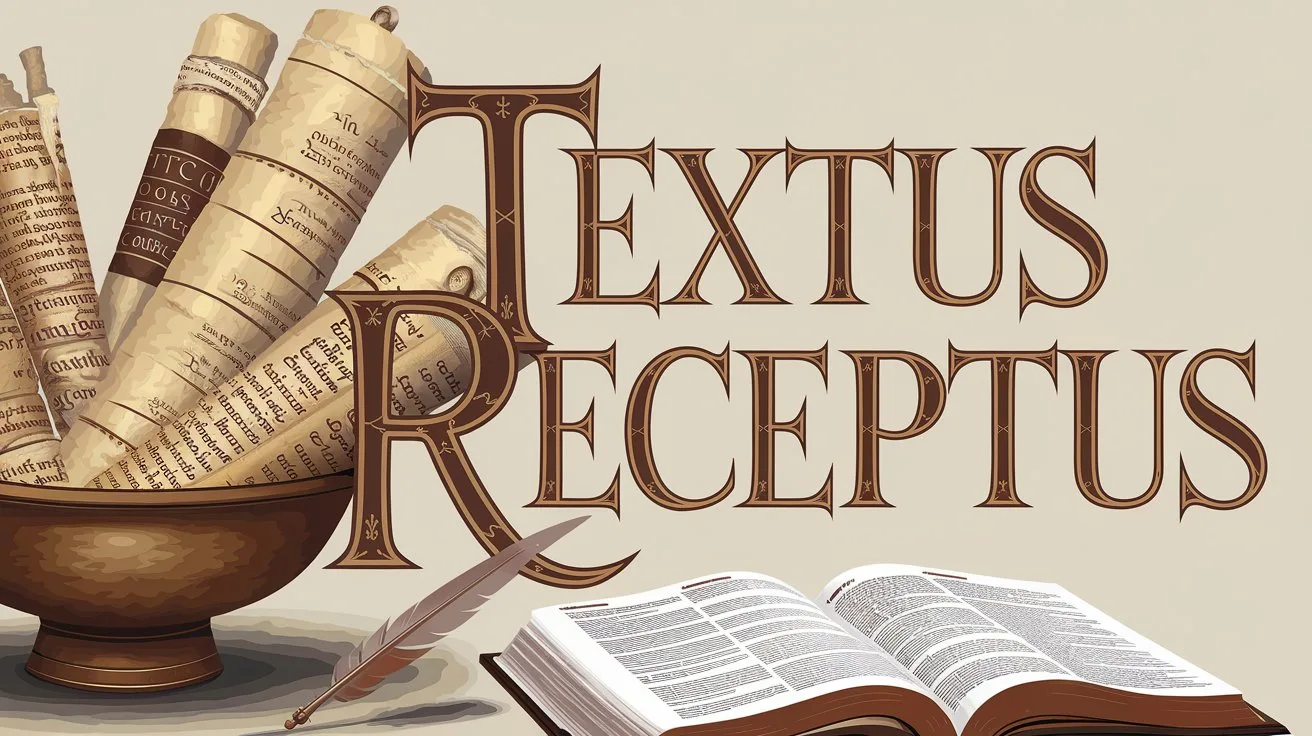The New Testament has been preserved in more manuscripts than any other ancient text. There are over 5,800 Greek manuscripts, along with 10,000+ Latin manuscripts and thousands of others in various languages such as Syriac, Coptic, and Armenian. The vast majority of these manuscripts agree with what is known as the Byzantine Text (or the Majority Text), which is the textual tradition that the Textus Receptus (TR) is based on.
This massive number of manuscripts allows us to verify the accuracy of the New Testament because we can compare copies from different regions and see how God faithfully preserved His Word.
By contrast, the Alexandrian Text (which modern critical texts like the Nestle-Aland rely on) is based on a much smaller number of manuscripts; primarily Codex Vaticanus and Codex Sinaiticus, both of which differ significantly from the vast majority of Greek manuscripts.
How Did the Church Pass These Manuscripts Down?
From the time of the apostles, the early church was diligent in preserving and copying the Scriptures. Paul’s letters were written to specific churches but were intended to be shared (Colossians 4:16). The apostles and their disciples carefully preserved these writings, copying them by hand to spread them to new believers.
During the early centuries, churches took great care in preserving the words of Scripture faithfully. The Byzantine Church (which later influenced the Greek Orthodox tradition) maintained the Majority Text tradition. Because of their devotion to accuracy and careful copying, the Byzantine manuscripts are remarkably consistent with one another.
Some of the key factors in transmission were:
Church use – The Word of God was read and copied in local churches, ensuring accuracy.
Copyist communities – Faithful scribes made sure to check copies carefully against the originals.
Widespread distribution – Since copies were sent across the Christian world, if an error was made in one copy, it would be obvious because other copies would remain consistent.
Persecution and preservation – Christians under persecution, especially before Constantine, carefully guarded the Scriptures, ensuring their transmission.
The Byzantine manuscripts are so consistent because they were used in churches for centuries. If an error appeared, it would be recognized quickly because there were so many copies being used.
If Some Manuscripts Differ, How Do We Know Which One Is Correct?
The principle of majority agreement helps us determine what the original wording was. If 99 out of 100 manuscripts say one thing, and only one manuscript says something different, we can logically conclude that the majority represents the true text.
In contrast, modern Critical Text scholars (who favor the Alexandrian manuscripts) often argue that the oldest manuscripts are the best. However, age alone does not determine accuracy. If an older manuscript was not widely copied, it might mean that the church rejected it as unreliable. Codex Vaticanus and Codex Sinaiticus, for example, contain numerous contradictions between themselves and were likely not used in churches for this reason.
For example, some differences between the Alexandrian text and the Textus Receptus include:
Mark 16:9-20 – The longer ending of Mark is missing in Vaticanus and Sinaiticus, but it appears in over 1,600 manuscripts of Mark.
John 7:53–8:11 – The account of the woman caught in adultery is removed in the Alexandrian text, but it appears in the vast majority of manuscripts.
1 John 5:7 (The Comma Johanneum) – The Alexandrian text omits the Trinitarian statement, but the Majority Text and the Textus Receptus retain it.
Matthew 6:13 – The Alexandrian manuscripts remove “For Yours is the kingdom and the power and the glory forever. Amen.”
The Majority Text tradition (which underlies the Textus Receptus) preserves these passages because they were widely known, copied, and used by the early church.
Why Is the Textus Receptus Trustworthy?
The Textus Receptus (TR) is the Greek text compiled by Erasmus in 1516, later refined by scholars such as Stephanus, Beza, and the Elzevir brothers. The TR became the foundation for the King James Version (KJV) and the New King James Version. It is based on the Majority Text tradition, ensuring that it reflects the consistent manuscript evidence preserved by the church for over a thousand years.
Here’s why the TR is trustworthy:
- It is based on the vast majority of manuscripts: The TR aligns with the Majority Text, meaning it represents what most Christians copied and used.
- It reflects what was preserved in the churches: Unlike the Alexandrian manuscripts, which were largely abandoned, the TR’s textual tradition was actively used by Christians.
- It was refined over time: Erasmus and later scholars compared multiple Byzantine manuscripts to ensure accuracy.
- It aligns with early church usage: Many church fathers quote passages found in the TR but missing from Alexandrian texts.
- It was divinely preserved: Jesus said, “Heaven and earth will pass away, but My words will by no means pass away” (Matthew 24:35). The fact that the Byzantine text tradition has remained stable for centuries shows God’s hand in preserving His Word.
The modern Critical Text is largely based on just a handful of Alexandrian manuscripts that were hidden away for centuries. If God’s Word was meant to be preserved among His people, wouldn’t He ensure that the correct text was widely used, rather than forgotten in a monastery?
Paul reminds us in 2 Timothy 3:16-17:
“All Scripture is given by inspiration of God, and is profitable for doctrine, for reproof, for correction, for instruction in righteousness, that the man of God may be complete, thoroughly equipped for every good work.”
If all Scripture is inspired by God, then God would have also preserved His Word. The Textus Receptus represents that preserved tradition, handed down through the faithful church, used in preaching, and defended against corruption.
My Final Thoughts
The debate over textual transmission is ultimately a question of preservation. Has God kept His Word safe among His people, or should we trust a handful of “older” manuscripts that contradict the majority? The Textus Receptus stands as a testimony to the faithful preservation of Scripture. Unlike the Critical Text, which is based on the assumption that God’s Word was lost and had to be reconstructed, the TR and the Majority Text show that God preserved His Word through His Church.
The Bible is not just any book; it is the living Word of God (Hebrews 4:12). And if we believe God preserved His Word, then we must believe He did so through the vast majority of manuscripts, rather than a few isolated texts. The Textus Receptus is trustworthy because it reflects what the Church has always received, read, and passed down.
We can rest assured that we have the true Word of God, and we must remain faithful to it, knowing that God’s Word will never pass away (Isaiah 40:8).




